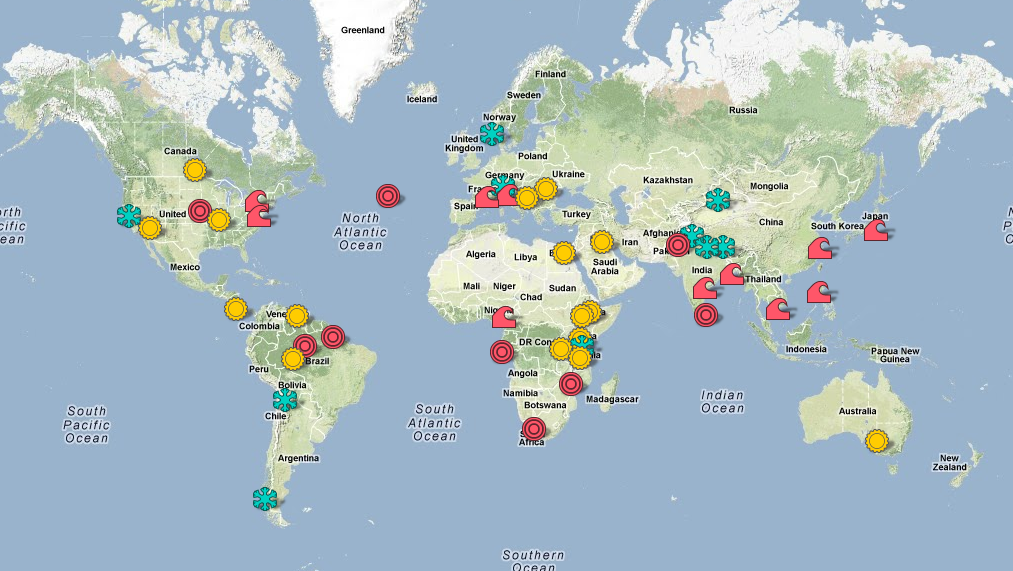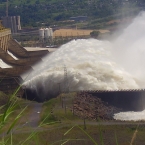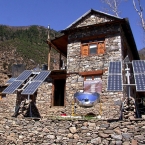Climate Change and Rivers
Though large hydropower projects are often presented as a "clean and green" source of energy, nothing could be further from the truth: River-wrecking dams are the wrong choice for a warming world.
International Rivers works on four key areas where climate change, dams and rivers intersect. For an in-depth look at each of these areas, click the links below, read 10 Reasons Why Climate Initiatives Should Not Include Large Hydro, or watch the video below.
The Wrong Climate for Damming Rivers from Todd Southgate on Vimeo.
Adapting to a warming world
Some of the worst impacts of climate change on both people and ecosystems will be felt through its impacts on water. Some areas will become much drier, some wetter. More extreme floods will threaten the safety of dams, and unprecedented droughts will drastically reduce the hydropower and water supply services that dams are built to provide. Minimizing the impacts of climate change will require diversifying away from dependence on big dams for electricity generation and flood control. Water security in a warming world will require major improvements in water-use efficiency and in techniques such as rainwater harvesting and improved groundwater management and use.Reservoir emissions
Scientific studies indicate that dams and reservoirs are globally significant sources of the greenhouse gases carbon dioxide and, in particular, methane. The latest estimate published in a peer-review journal is that dams and reservoirs are responsible for almost a quarter of all human-caused methane emissions. This 104 million tonnes of dam methane equals 4-5% of all human-caused warming.Keeping dams out of carbon schemes
The Clean Development Mechanism (CDM) is the Kyoto Protocol’s main carbon offsetting program. It is intended to lower developed countries’ costs of reducing their greenhouse gas emissions through the purchase of "carbon credits" from projects in developing countries. It is also supposed to promote “sustainable development.” The CDM is failing badly on both counts. International Rivers seeks to prevent big hydro developers from exploiting the CDM’s flaws, to fix the CDM's worst loopholes, to exclude the CDM and reduce the amount of offsets in US climate legislation, and to promote better mechanisms for supporting decarbonization. View Video.Promoting standards for climate finance
International financial institutions are increasingly turning to climate finance as a way to fund the huge costs of large dams. International Rivers monitors climate-earmarked funds such as the Green Climate Fund to prevent large dams from entering project pipelines, promotes the use of strong social and environmental standards and technical benchmarks, and pushes climate finance away from a business-as-usual approach towards more resilient water and energy solutions.
Map of Climate Change, Dams and Rivers Hotspots
Around the world, climate change is melting glaciers that feed major rivers, contributing to drought-induced hydroelectricity blackouts, and threatening the water supply and river resources of billions of people. Below are some cases where climate change and dams are threatening the world’s rivers and the people who depend on them. If you would like to suggest other important cases to add to the map, please add a comment here.
Click on the image above to view the interactive map. You can also view Global Warming and River Hotspots in Google Maps Engine.
Key:
| Droughts, high temperatures | |
| Glacial melt, risk of glacial lake outburst floods | |
| Floods, coastal storms and rising sea levels | |
| Indicates key areas where multiple climate change impacts or climate-related activities are occurring |
- Google Earth 3-D Tour: Wrong Climate for Damming Rivers
- Climate Change Glossary
- Map of Climate Change and River Impacts
- Global Hydro Hall of Shame
- Bad Deal for the Planet: Why Carbon Offsets Aren't Working...and How to Create a Fair Global Climate Accord
- Greenwashing Hydropower: The Problems with Big Dams
- Water shortages and climate change
- American Meteorological Society video on "The Basics of Climate Change" (7 min.)
- Infographic on climate risks to dams on the Zambezi River









